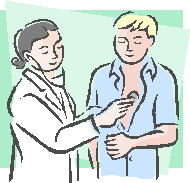People always ask me how I got started with my work in physician-patient communications. Like so many people, I had a story that I felt needed to be told. Much of my inspiration over the course of the last five years of writing Mind the Gap have come from my wife and my journey as we deal with her Stage IV Lung Cancer.
People always ask me how I got started with my work in physician-patient communications. Like so many people, I had a story that I felt needed to be told. Much of my inspiration over the course of the last five years of writing Mind the Gap have come from my wife and my journey as we deal with her Stage IV Lung Cancer.
But there was also a video I saw back in my blog’s early days that really gave me a sense of direction. It was a video featuring Maggie Breslin, at Mayo Clinic’s Transform 2009 Symposium. (Maggie is no longer with Mayo.) At the time, I was so taken with Maggie’s presentation that I pick up the phone and spoke with her about her “Power of Conversations” experiences. Well, I rediscovered that video in a recent guest blog post on Mayo Clinic’s Center for Innovation Blog. The piece was written by by Nolan Meyer, a student at the University of Minnesota Rochester.
Here is Nolan’s post, which includes the video. I hope it inspires you as much as it does me.
If you were to guess why patients consistently return to the Mayo Clinic and recommend the Mayo Clinic to friends and family, what reason would you venture? Unparalleled medical expertise? Superior technology? Prestige? Tropical weather conditions?
In contrast, the number one reason is not solely due to the excellent quality of care they receive. It is not that they receive pioneering procedures at a world-class academic medical facility, nor is it space-age medical technology. It’s not that they were prescribed miracle medications that exist nowhere else.Rich conversation is the pathway to quality, to efficiency, to affordability… when we have good conversations, we are practicing individualized medicine in its most authentic—it’s most human—form.”
The reason patients return to Mayo Clinic is that providers here take the time to connect with their patients—to talk with them and ensure all their patients’ questions are answered. This connection forged between Mayo Clinic healthcare staff and their patients ensures the concerns of patients and their families are understood and fully addressed. Although the Mayo Clinic is a premiere and world-class academic medical institution, the meaningful connections made here between providers and patients are what bring people back again and again.
In a time of healthcare reform, extensive regulations, standardization, and malpractice suits, when many healthcare institutions have turned to emphasize numbers of patients seen over the overall quality of healthcare delivery, the Mayo Clinic has remained steadfast in its familiar maxim: “The needs of the patient come first.”
“I believe that if we make satisfying conversations and human connection the focus of our healthcare delivery development—if we make connecting people and having them talk to each other the single most important metric by which we judge all of our efforts—we will get everything else we want our healthcare system to be. Rich conversation is the pathway to quality, to efficiency, to affordability… when we have good conversations, we are practicing individualized medicine in its most authentic—it’s most human—form.”
Maggie Breslin, in a research-and-design effort put forth by the Center for Innovation’s Spark Design Lab, set out to find and address elements that enhance or impede quality of healthcare delivery. Maggie was granted access to observe healthcare interactions in various departments of the Mayo Clinic. During her time working on this project, Maggie observed thousands of healthcare interactions ranging from the mundane to the life-changing. Maggie observed everything from annual influenza vaccinations, to radiological studies, to discussions of unforeseen treatment complications, to emotionally wrenching diagnoses of debilitating conditions.
These thousands of observed interactions qualifies Maggie to tell us what quality healthcare delivery looks like, and according to her, it looks like a satisfying conversation. According to Maggie, quality healthcare delivery is “the most human thing you’ve ever seen in your life!” Working on this groundbreaking project, Maggie became familiar with four powerful insights regarding conversation in healthcare:
- Conversation is how people determine quality and value.
- Conversation has therapeutic value.
- Conversation allows us to deal with ambiguity.
- People seek out conversation, even when we make it hard for them.
While some of these observations may seem intuitive, they have fallen by the wayside in many modern medical institutions. The power of a simple conversation in a medical setting seems to have been deemed “nice-to-have,” but unnecessary and extraneous by many modern designers of healthcare delivery. This is an unfortunate trend, as the importance of translating advanced scientific and medical knowledge from provider to patient is more important now than ever. Maggie asserts that these satisfying conversations are not a “nice-to-have,” an extra, an unnecessary and time-consuming luxury in modern medicine. Quite the contrary: satisfying conversations are what Maggie calls “the very essence of healthcare delivery.”
Maggie relates a story in which she and her colleagues set about the hospital in search of factors which enhance or impede human connection. Her team found a startling pattern: the presence of human connection in healthcare delivery was, by and large, the result of the actions of outgoing individuals. In contrast, the absence of human connection was the result of often-unforeseen systematic hurdles. Maggie argues that in modern medicine, too many decisions are being made in the name of efficiency, standardization, legal requirements, documentation, and numbers.
All of these decisions contribute to the construction of what Maggie calls a wall between providers and patients. The inspiring thing, though, is that both patients and providers make what Maggie calls a Herculean effort to jump over that wall and find ways to connect with one another.
The Mayo Clinic’s efforts to recognize and address impediments to meaningful patient-provider interactions are an example of how it strives to provide the best patient care possible. Maggie Breslin calls on everyone involved in healthcare delivery and its design to ask themselves one question as they do their work: what kind of conversation will result from this concept? If the answer is “a better conversation,” then have that mean something!









